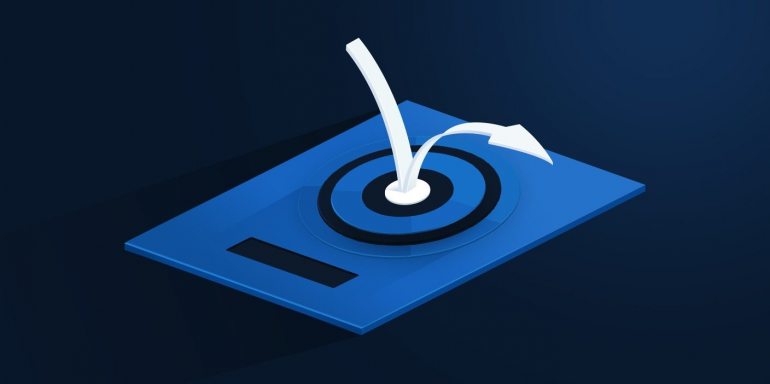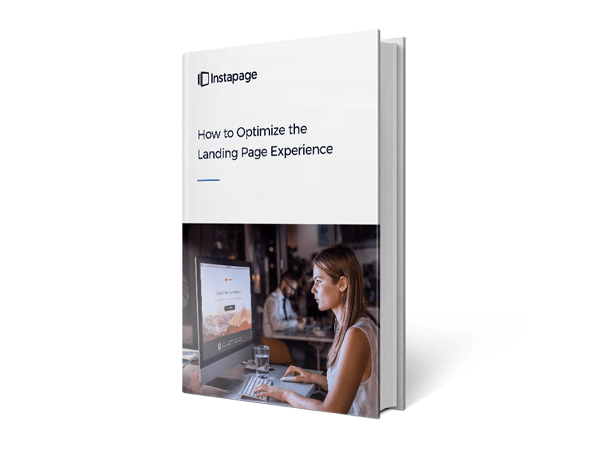Pageviews, unique visitors, click-throughs — many digital marketing metrics can be understood with relative ease. Bounce rate, on the other hand, is a little more mysterious.
While its definition is straightforward, the real reason for a bounce often isn’t. In some cases, a high bounce rate can be a sign of poor user experience. In other cases, it can be a sign of great user experience.
In all cases, though, understanding it requires a close look at your web pages and their purpose.
What is bounce rate?
Google defines a “bounce” as a “single-page session on your site.” Bounce rate is the percentage of single-page sessions compared to all sessions on your website.
For example, if a user clicks through to read a blog post but doesn’t visit any other page on your website before leaving, that’s a bounce. If nine out of ten people who visit your website do the same thing, your bounce rate is 90%.
Keep in mind, if you’re using Google Analytics to determine your bounce rate, the definition of a bounce is expanded:
“In Analytics, a bounce is calculated specifically as a session that triggers only a single request to the Analytics server, such as when a user opens a single page on your site and then exits without triggering any other requests to the Analytics server during that session.”
If you have event tracking set up, a triggering of any event will prevent a one-page session from being counted as a bounce. Either way, should you care?
Dan Shewan at WordStream says “bounce rate, as a metric, kind of sucks.” So why?
What does bounce rate really measure?
The answer’s a little tricky. Graham Charlton of Search Engine Watch calls bounce rate a measure of a site’s “stickiness.”
“On SEW, I’d like people to click on a link from search, Twitter or some other referral source, find a useful article, then decide to browse further and view all of our other lovely content.
For example, this Google Analytics custom segment looking at the percentage of visitors viewing multiple pages provides a measure of a site’s ability to retain users’ interest beyond the page they land on.”
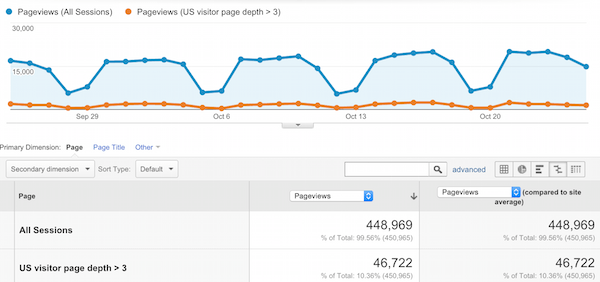
Along the same lines, this HubSpot infographic claims that if you have a high bounce rate, it’s a sign that the user doesn’t want to stick around:
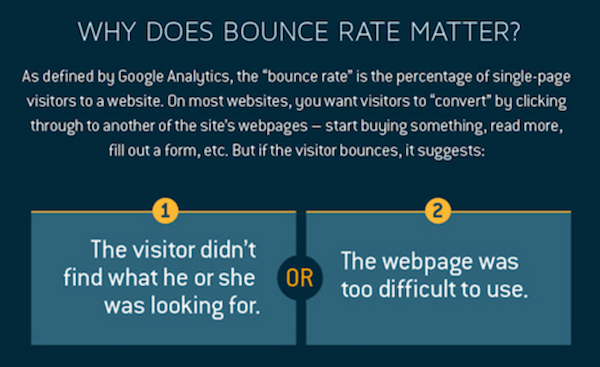
But that’s not necessarily true.
For example, let’s imagine we’re searching for instructions on how to tie a tie. We punch the query “how to tie a tie” into Google, and we click on the first organic result. It takes us to this page on Ties.com:
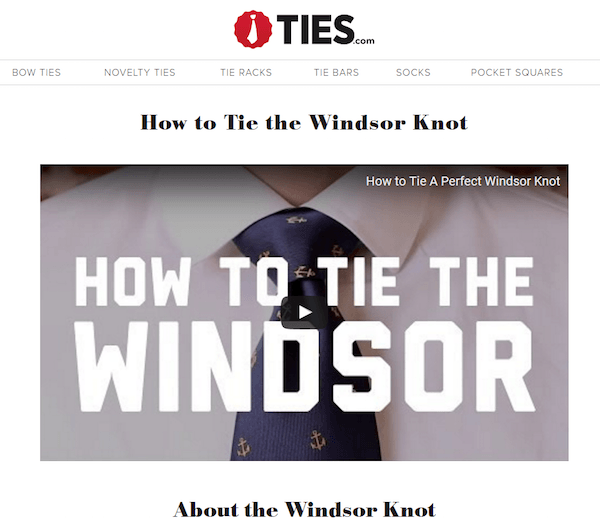
We watch the video, maybe scroll down to check it against the diagrams below the fold, and we learn how to tie our tie. Then, we leave the page.
Now, that’s technically a bounce, but is it a sign of a poor user experience?
No. It’s the opposite actually. We visited, we learned quickly, and we tied our tie. The user experience was great in this case.
But bounce rate doesn’t take into account successful visits like these. So, how do you know when bounce rate is good and when it’s bad?
What is a good bounce rate?
That depends. Because visitors’ reason for leaving a web page after a single session varies, Aurora Haley from the Nielsen Norman Group says “site-wide bounce rate is a vanity metric not worth tracking or reporting.”
If you’re going to track bounce rate, you should do it based on the content of your pages.
Blog posts, for example, usually generate a high number of bounces for the reason we covered above. We wanted to learn how to tie a tie, and a blog post on Ties.com taught us. Then, we bounced.
On the other hand, retail sites, on which visitors are more likely to browse multiple pages, generate far fewer.
According to HubSpot, the average bounce rate based on page type is as follows:
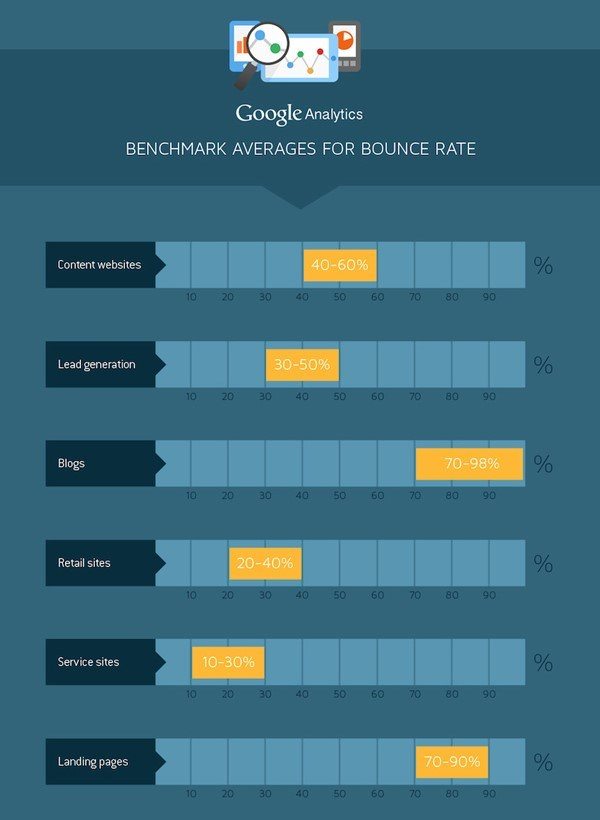
Famed usability researcher Jakob Nielsen takes the analysis a step further, emphasizing the importance of understanding how visitors arrive at these pages. Traffic sources contribute to a page’s bounce rate as much as page type does. He separates them into four categories:
- Low-value referrers. These are networks like Zergnet that promote clickbait at the bottom of an article. Users who click through it to your website are often on a mission to satisfy curiosity and nothing more. Don’t expect them to stick around long.
- Direct links from other websites: These are like the link above, for example, in the text “Jakob Nielsen takes the analysis a step further.” Clicking through it indicates a level of interest in the content, but likely not as much of an interest in the content you navigated from. If users from this source bounce often, it could be an issue of poor user experience.
- Search engine traffic: These are visitors with high intent. They’ve used a search engine to find an answer, and they’ve identified your website as the one to provide it. If searchers are bouncing from your homepage after arriving there, poor user experience is likely the problem. If they’re landing on a blog post, though, a high bounce rate is perfectly normal.
- Loyal users: These are people who return to your website on a regular basis. While they’re likely to poke around your website, it’s unrealistic to think that every time they return they’ll navigate to multiple pages. Maybe, for example, they’re a fan of your blog, and they return every few days to see if you’ve posted content they’re interested in reading. They type in the web address of your main blog page and then leave if they don’t see anything that interests them. A mid-range bounce rate is expected from this type of traffic.
If, based on traffic and page type, your website’s bounce rates are higher than you’d like them to be, there are several things you can do to reduce them.
How to reduce bounce rate
There’s a right way and a wrong way to reduce bounce rate. A focus on optimizing for the metric can lead to adjustments that actually worsen the user experience.
Think, for example, of listicles like “Animals science wants to bring back from extinction,” which use pagination to split one article into multiple pages.
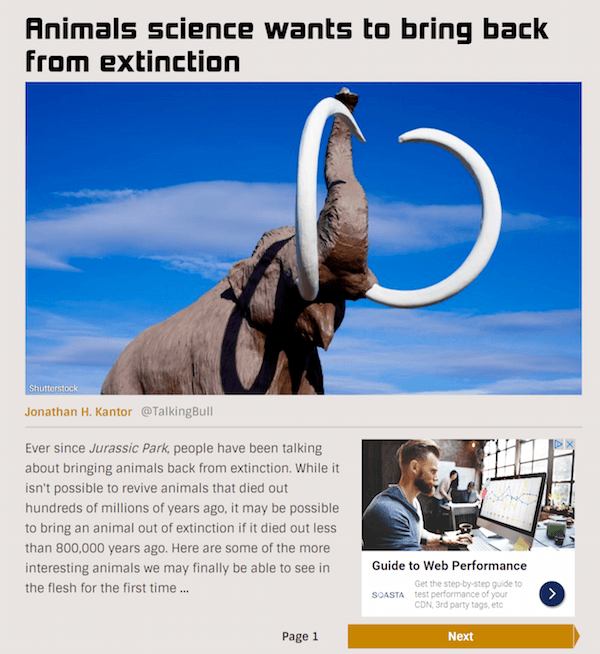
The technique will likely reduce bounce rate and boost pageviews, but it will almost certainly detract from user experience.
So your goal shouldn’t necessarily be to optimize for bounce rate, but to improve the user experience, which will lead to a lower bounce rate. Here’s how:
1. Speed up your page’s load time
Recent research from Google found that DOM ready time — a measure of how long it takes a web browser to receive and process a page’s HTML code — is a leading predictor of bounce rate. So is full-page load time.
Data shows that 53% of visitors will abandon a page if it doesn’t load in 3 seconds.

After surveying 900,000 mobile ads’ post-click landing pages, Google researchers found that 70% of them took 7 seconds or more to load content just above the fold. If your page is one of them, it’s likely more than half of your visitors are bouncing before they even see it. To speed it up:
- Cut down on page elements — specifically images. Researchers warned that favicons, product images, and logos can easily contribute to ⅔ of a page’s data size. If they’re not crucial to your value proposition, scrap them.
- Set performance budgets. Before you begin designing your page, Google researchers recommend setting what’s called a “performance budget.” Determine how quickly you want your page to load — the “budget” — then design within the confines of that budget.
- Use less JavaScript. A type of code that halts the parsing of HTML code, JavaScript is found in many third-party analytics tools and widgets. These scripts may help you track user behavior, but they’re slowing down your webpage significantly.
- Harness the lightweight power of AMP and AMP for ads. Most web traffic today comes from mobile devices, so improving the mobile user experience should be tops on your list of priorities. Try using the AMP and AMP for ads programs to build pages that use 10 times less data, and ads that load 6 times faster than average.
Learn more about how speed affects bounce rate and conversions in this blog post.
2. Eliminate sources of spam
As Jakob Nielsen shared above, traffic source is a main contributor to bounce rate. When that traffic source is poor, the result can be a spike in bounces.
Take, for example, one advertiser who spent $25 on a PPC network to drive 539 visits to a post-click landing page, but generated no conversions. Was his post-click landing page that bad?
Nope, but the traffic source was. It drove clicks with spammy sites that looked like this:
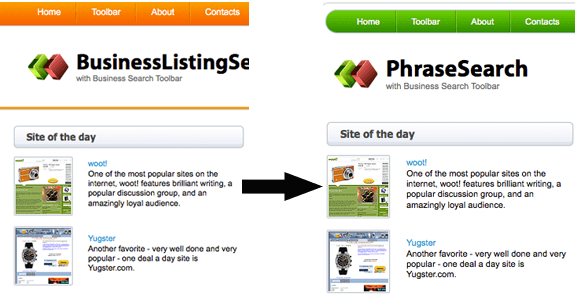
Make sure, like Nielsen recommends, that you fully understand your sources of traffic. Your page’s bounce rate might not have anything to do with your page, but instead, with the services you’ve put your trust in to drive traffic to it.
3. Optimize for the right keywords
When prospects enter a search query in Google, they’re presented with pages that are most likely to provide the answer. A preview of each is generated on a search engine results page, with the help of that page’s title tag and meta description.

Before you publish a page, make sure that its title tag and meta description accurately represent the content of the page. If visitors clicking through the above search engine result don’t ‘find post-click landing page copywriting tips for every type of post-click landing page, they’ll bounce.
4. Keep your web pages simple
Research shows that people form an opinion about a website even faster than they form one about a human being. One study from Google in particular identified the driving factor behind a good first impression: simplicity.
Take a look at the SimilarWeb homepage:
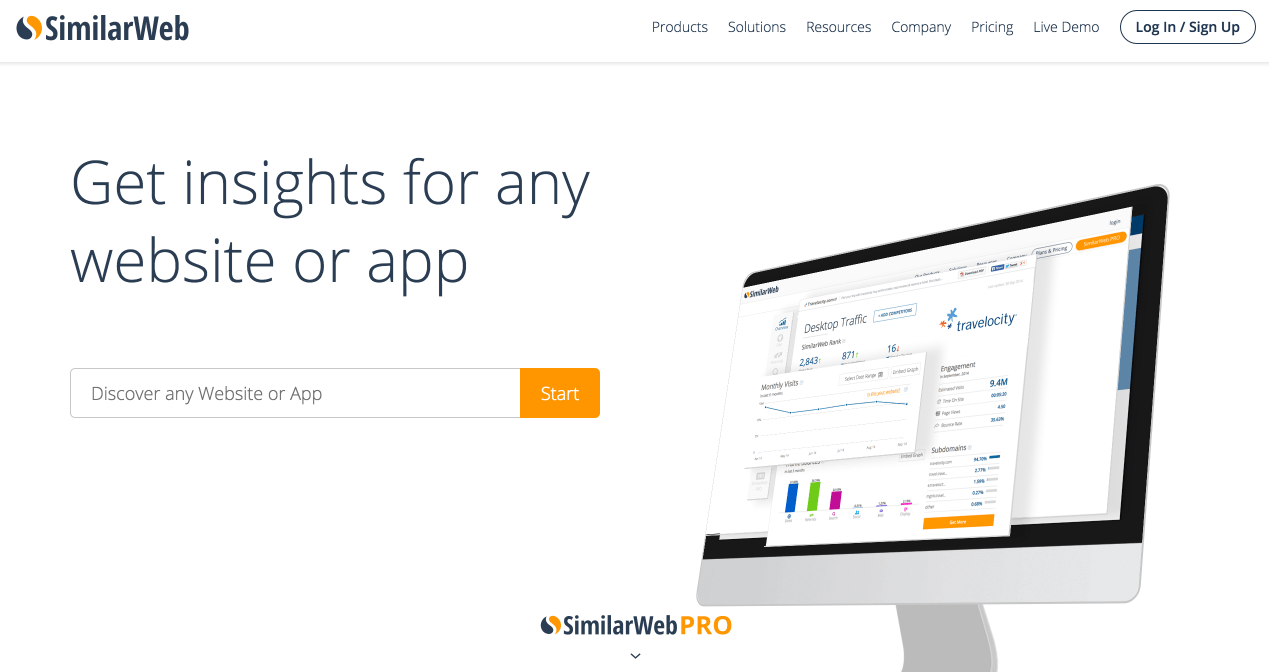
It’s sharp; it uses white space effectively; and it makes using the tool easy and explains what it does in just a few words. If you want to learn more about pricing, or visit the help center, or read the blog, you can do so with the help of an intuitive and straightforward menu. This is the type of simplicity you should try to emulate.
When visitors arrive on your page they should be able to:
- Find information quickly. If they searched “how to tie a tie,” and the page is about how to tie a tie, then the visitors should be able to learn how to tie a tie on the page quickly.
- Navigate your website with ease (unless the page they’re arriving on is a post-click landing page, in which case it should have no navigation at all). Make sure your site is organized and presented in a straightforward way that makes it simple for your prospects to visit other web pages.
- Identify you as a credible source of information, and access that information easily. If you’re bombarding visitors with ads and popups, they won’t stick around long. Don’t become so obsessed with driving clicks and capturing email addresses that you do it at the expense of the user’s experience. You may make some money in the short-term, but you’ll lose returning visitors and opportunities to maximize customer lifetime value in the long run.
5. Optimize for skimming
If you’re a regular reader of the Instapage blog, you’ll know we hammer this point home fairly regularly. Studies show that internet users don’t read. Instead, they skim in patterns that resemble an “F” on content heavy pages, and a “Z” on pages with images:
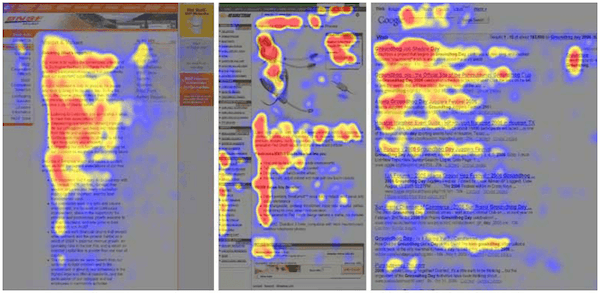
When internet users come across a page filled with blocks of unformatted text like this one, they bounce almost immediately:
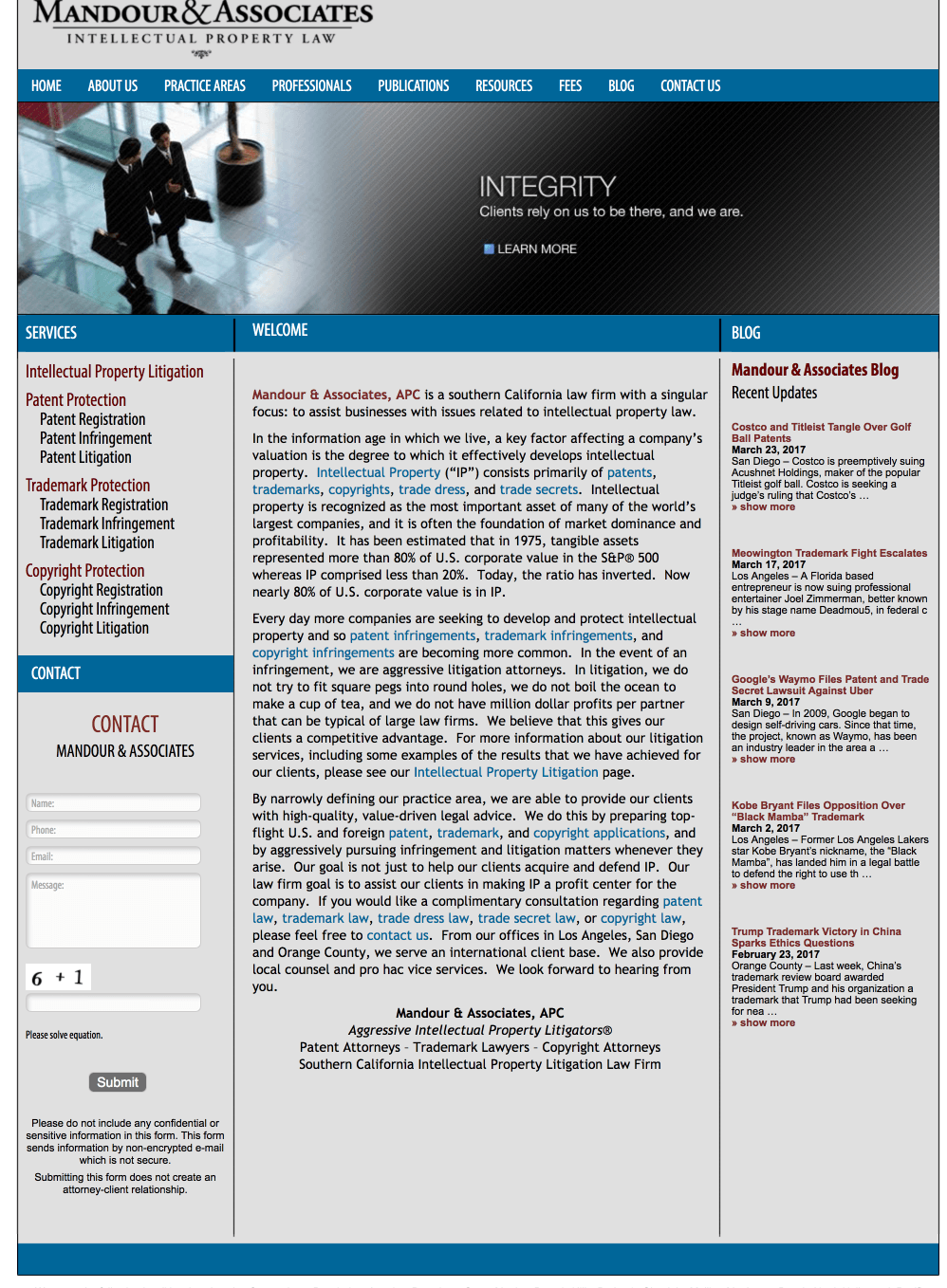
The reason ties in with number 4 above: Visitors need to be able to find the information they’re searching for quickly. If you give them the option of leaving your website or drudging through unsightly blocks of text, they’ll do the former.
Make your page skimmable by:
- Constructing a visual hierarchy
- Keeping paragraphs short
- Separating sections of content with subheadings (like in the article you’re reading currently, for example)
- Using lists and images to break up the content
- Eliminating jargon from your vocabulary
- Writing in a friendly, conversational tone
6. Offer users related content
Yes, blog posts usually have the highest bounce rates of all page types, but that doesn’t mean they have to. When trying to reduce the number of single-session blog post visits, Nielsen recommends offering information in “a linear path.”
Ask yourself, “What’s the next logical step for this visitor?” Then, guide them to it at the bottom of a blog post, like Content Marketing Institute does here:
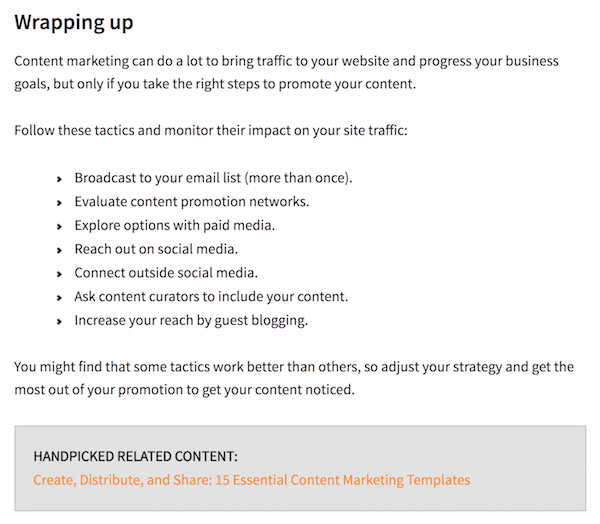
You can also do this in the body of your content with internal linking. You’ll notice throughout the article you’re reading that there are various hyperlinked phrases that give you the option of navigating to more Instapage articles.
7. Drive paid search traffic to highly customized post-click landing pages
This one again ties in with number 3: Visitors need to get what they want quickly or they won’t stick around.
When they’re looking for an answer with the help of a search engine, internet users have “high intent,” meaning they’re on the hunt for something very specific. So if I punch “lead generation software” into Google, and click on this result that says “Lead generation software,” I should land on a page that will offer me lead generation software.

Instead I’m directed to a marketing automation software page that doesn’t mention “lead generation” once. Not finding anything related to my keyword search, I bounce.
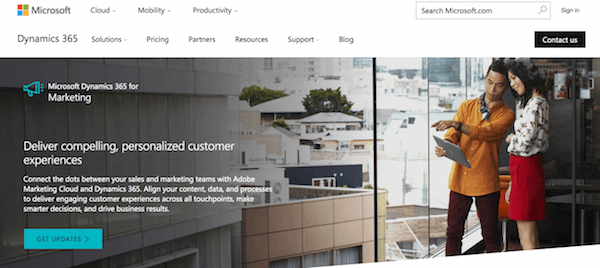
If you’re going to bid on a keyword, make sure it’s relevant to the page that your ad will drive visitors to. If the message of the page doesn’t match the ad, your visitor will bounce without hesitation.
Don’t obsess over bounce rate
Your focus shouldn’t be on optimizing for bounce rate, but improving the user experience. Then, bounces will take care of themselves. The easier your content is to access and the more relevant it is to your visitor, the more pages they’re likely to check out. For more details, check out our guide to improving the post-click landing page experience:
Then, start providing a better user experience with, targeted, fully-customizable post-click landing pages. Sign up for an Instapage Enterprise demo today.
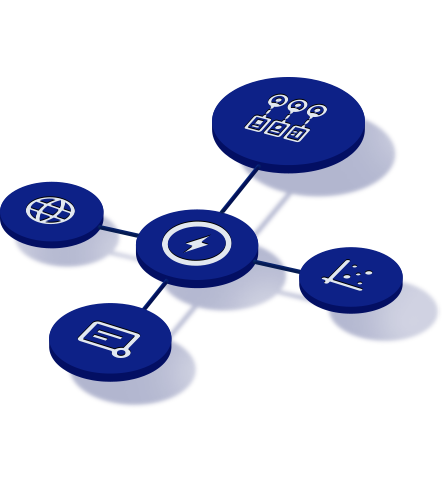
See the Instapage Enterprise Plan in Action.
Demo includes AdMap™, Personalization, AMP,
Global Blocks, heatmaps & more.
